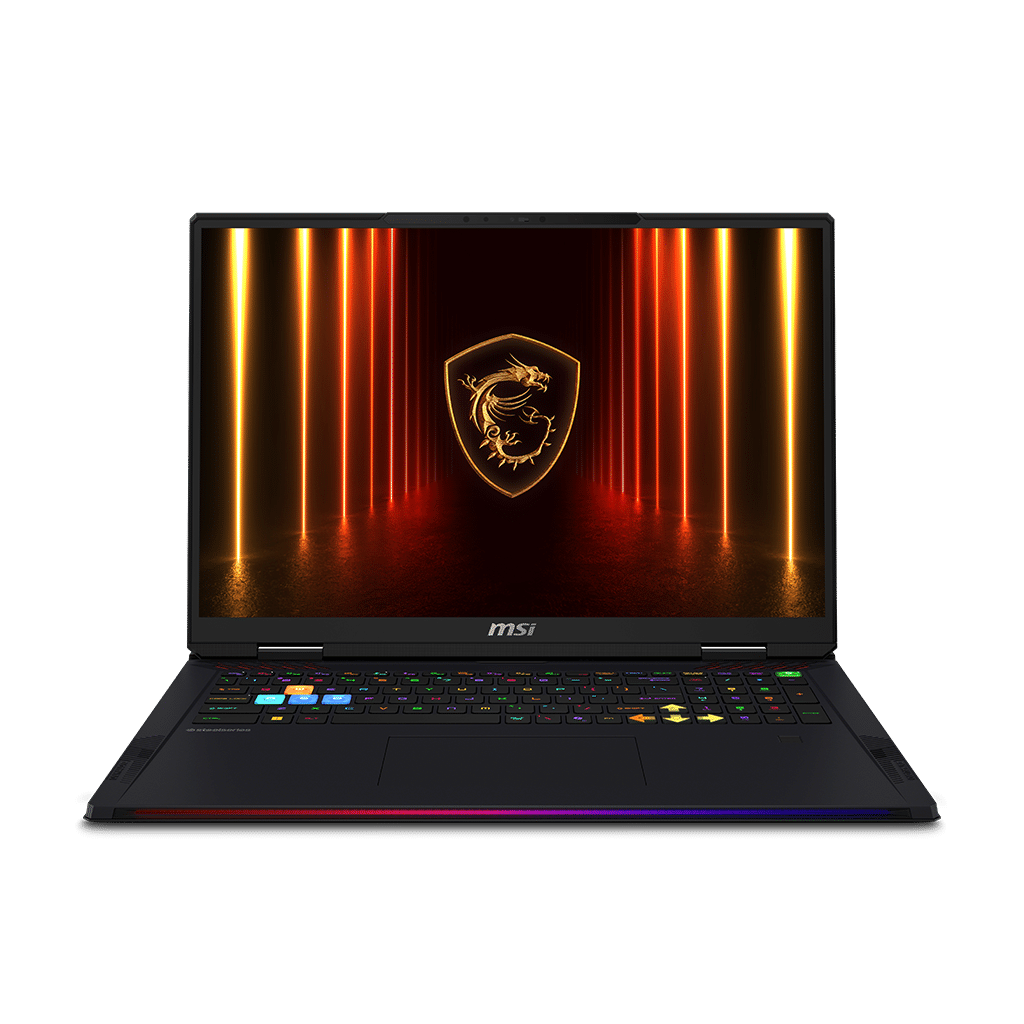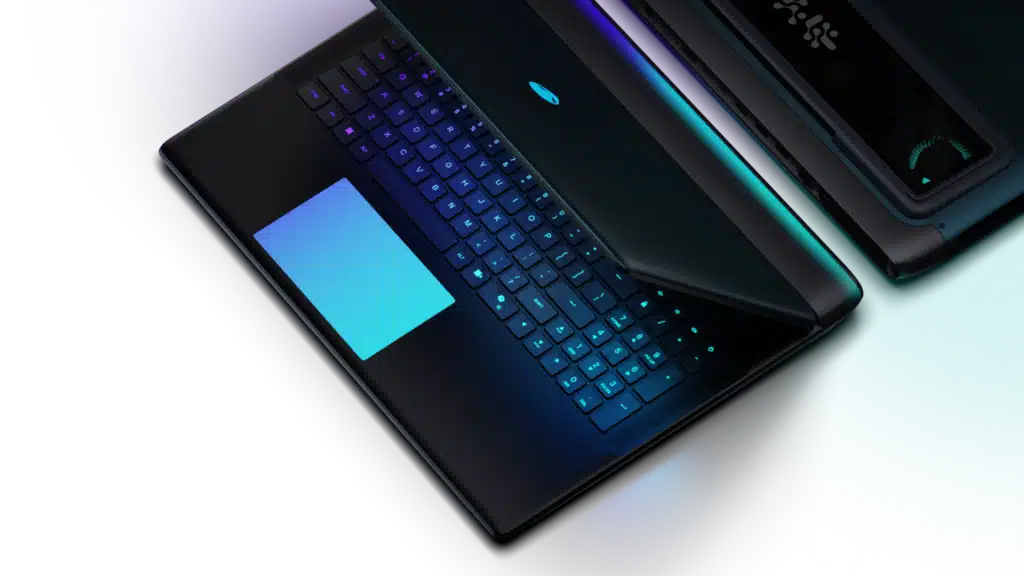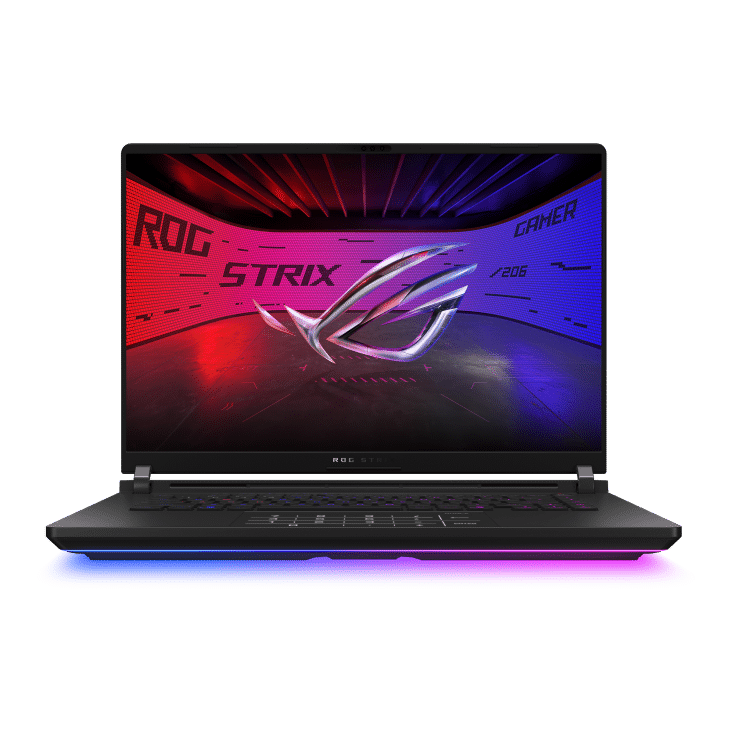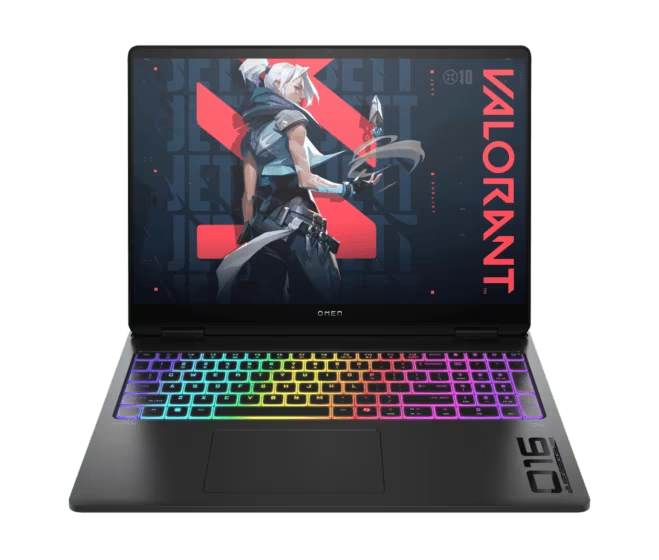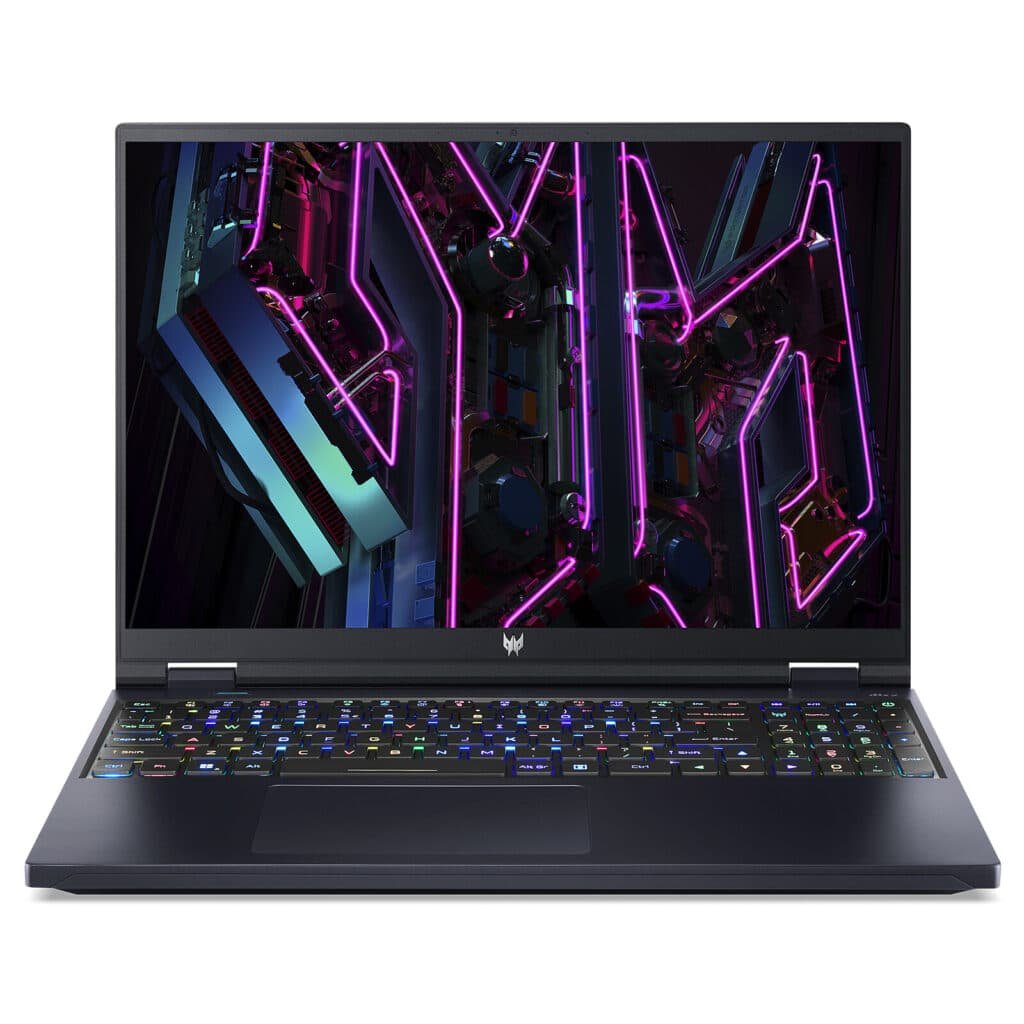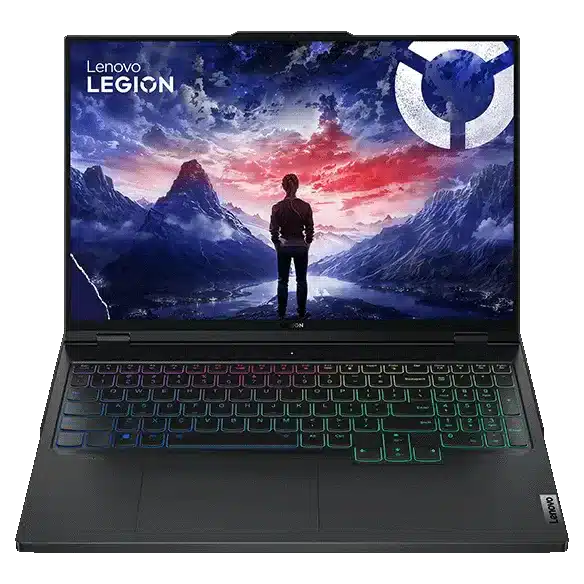Desktop vs Gaming Laptop: Which Gaming PC is the Best
The classic debate of Desktop vs. Gaming Laptop, Which is better for gaming? Should I buy a Gaming rig or a powerful laptop? That is what we will be discussing in this topic.
We all face the dilemma of: a powerful, stationary desktop tower or a sleek, all-in-one gaming laptop?
This is the first question you might ask, and for a good reason. Before we go any further, let’s settle this:
A gaming desktop will always deliver superior performance, easier upgrades, and better cooling than a laptop.
It’s not even a close contest. So instead of debating over this question, let’s focus more on what gaming laptop is best for you.
Yet, the undeniable truth for many modern gamers is that life doesn’t happen in one place. The raw power of a desktop is fantastic, but that power becomes irrelevant if you need to game in a dorm room, take your rig to a friend’s house for a LAN party, or simply don’t have the space for a permanent setup. This is where the gaming laptop shines. Its single, monumental advantage—portability—isn’t just a feature; for the right user, it’s the entire foundation of the decision.
If your lifestyle demands that you can game from the couch, on a trip, or in a compact living space, then the question isn’t about raw performance, but about finding the most powerful solution that fits your mobile needs.
Therefore, selecting a portable machine requires a different mindset than building a desktop. Instead of comparing individual components in isolation, you’re evaluating a complete, integrated system. We have a separate article that covers everything you need to know: We review Laptop GPU Performance, the best laptop CPU for gaming, how much RAM for a gaming laptop, how much SSD storage for a gaming laptop, and gaming laptop features.
Let’s break down the key factors to help you decide.
Desktop vs Gaming Laptop: At a Glance, The Quick Comparison
(Top-tier, unmatched power)
(Very good, but thermally limited)
☆☆☆☆☆ (Stays in one place)
★★★★★
(Game anywhere, anytime)
Space Efficiency
(Requires dedicated space
★★★★★
(All-in-one, minimal footprint)
Initial Cost
Varies
(Can be more for high-end)
Varies
(Premium for portability)
(Easier/cheaper to upgrade)
(Often requires full replacement)
Setup Flexibility
(Choose your own peripherals)
(Built-in screen & keyboard)
Key factors: When choosing between a gaming laptop and desktop, portability is the deciding factor.
If your lifestyle involves frequent travel, limited space, or a need for a single device that handles both work and play, a gaming laptop is the clear choice.
Your daily routine makes the decision for you.
While desktops like the hefty tower PCs offer maximum performance, their portability varies. Even powerful, compact options still require external peripherals—a monitor, keyboard, and mouse—to function.
This is where gaming laptops hold a major advantage: they are complete, all-in-one systems. A single laptop provides everything you need to start playing anywhere, although it may not offer the precision required for games like FPS and many others.
Why Choose a Gaming Laptop?
It’s All About Your Lifestyle
When it comes to performance, desktops win. But gaming isn’t just about raw power—it’s about how you live. A desktop ties you to one place, while a gaming laptop gives you the freedom to play anywhere.
The Advantages of a Gaming Laptop:
- Portability Take your games from your desk to the couch, dorm, or on the road.
- All-in-One Setup — Built-in screen, keyboard, and trackpad mean no extra gear required.
- Space-Saving — Ideal for smaller rooms or shared living spaces.
- Versatility — One device for gaming, school, and work.
A gaming laptop may not match a desktop’s raw power or easy upgrades, but if your lifestyle values mobility, flexibility, and convenience, it’s the right choice.
Best Gaming Laptop: The Perfect Buyer’s Choice
In this section, we hand-picked the Best Gaming Laptop 2025 buyer’s choice. We provide specific product recommendations for the best gaming laptop 2025 in every category, including best RTX 5090 laptop, best RTX 5080 laptop, best RTX 5070 Ti laptop, best 1440p gaming laptop, best budget gaming laptop 2025, best cheap gaming laptop 2025 and more.
Best Gaming Laptop 2025 (High Performance)
Specifications
- Graphic Card: NVIDIA RTX 5090 Laptop GPU 24 GB
- Processor: AMD Ryzen 9 9955HX3D
- RAM: 64GB DDR5 5600MHz
- Storage: 2 TB SSD
- Screen Size: 18″ 3840 x 2400 120 Hz Mini LED
Reasons to Buy
- The AMD Ryzen 9 9955HX3D is currently one of the most powerful mobile processors, especially for gaming
- High-end MSI laptops like this typically feature 18-inch 4K Mini-LED displays with a 120Hz refresh rate and DisplayHDR 1000 certification
- The 9955HX3D isn’t just for gaming. It excels in productivity tasks too, with significant improvements in rendering, compression, and AI workloads
- With 64GB of DDR5 RAM and a 2TB SSD, this laptop is well-equipped for multitasking
- This laptop likely includes Thunderbolt™ 5 support, enabling up to 120Gbps data transfer speeds and support for multiple high-resolution displays
Reasons to Avoid
- Extreme Price Point: While the exact price isn’t listed in your search results, comparing it to similar models provides context
- Diminishing Returns: The performance difference between an RTX 5090 and an RTX 5080 or even a previous-gen RTX 4090, while measurable, may not justify the enormous price jump for most gamers. You are paying top dollar for the last 10-15% of performance
Retailer Deals
This MSI Raider 16 Gaming Laptop is ideal for:
- Gamers who want the absolute best mobile performance for 4K gaming and future-proofing.
- Content creators and professionals who need a portable workstation for rendering, AI tasks, and video editing.
- Enthusiasts who value cutting-edge technology like Thunderbolt™ 5, Wi-Fi 7, and advanced cooling.
If you prioritize raw performance, future-proofing, and a premium experience, this MSI laptop with the Ryzen 9 9955HX3D and RTX 5090 is arguably one of the best choices on the market in 2025.
For more details, you can check the Newegg product page and the AMD official page for the Ryzen 9 9955HX3D.
Specifications
- Graphic Card: NVIDIA RTX 5090 Laptop GPU 24 GB
- Processor: Intel Core Ultra 9 processor 275HX
- RAM: 64GB DDR5 5600MHz
- Storage: 4 TB SSD
- Screen Size: 18″, WQXGA, 300Hz, 500 nits, 100% DCI-P3, Advanced Optimus, ComfortView Plus, G-SYNC, FHD Cam
Reasons to Buy
- This is a high-end laptop capable of exceptional performance for gaming, content creation, and other demanding tasks
- Ideal for fast-paced gaming and provides a smooth, vibrant visual experience
- The laptop boasts a premium “Liquid Teal” anodized aluminum chassis that feels solid and luxurious. Its futuristic design, customizable AlienFX RGB lighting
- Alienware’s Cryo-Tech cooling solution, with multiple fans and heat pipes, helps manage thermals effectively under heavy load
- High-Quality Additional Features, Keyboard, Audio and Webcam
Reasons to Avoid
- This is a premium laptop with a starting price around $2,899.99 and can exceed $4,000 for top configurations (like the RTX 5090 model) . You are paying for the brand, design, and top-tier performance
- Like most high-performance gaming laptops, battery life is short. Expect only 80 minutes to 2 hours of light gaming on battery power, and performance drops significantly when unplugged. Some models may also have an FPS cap on battery to conserve power
Retailer Deals
Buy the Alienware 18 Area-51 if:
- You are a serious gamer who wants maximum performance and a large, fast display.
- You need a desktop replacement for content creation, streaming, or other intensive tasks and don’t plan to move it often.
- You value premium build quality, advanced cooling, and future-proof specs.
- Your budget allows for a high-end gaming laptop.
Look elsewhere if:
- Portability and battery life are top priorities.
- You are looking for the absolute best value for your money.
- You prefer a more understated design or need a lighter laptop.
For the most accurate and up-to-date pricing, configuration options, and potential discounts, it’s always best to check the official Dell product page directly.
Specifications
- Graphic Card: NVIDIA RTX 5090 Laptop GPU 24 GB
- Processor: Intel Core Ultra 9 processor 275HX
- RAM: 64GB DDR5 5600MHz
- Storage: 4 TB SSD
- Screen Size: 16″, WQXGA, Mini LED, 240Hz / 3ms, 1200 nits, 100% DCI-P3, Advanced Optimus, Nebula HDR, G-SYNC,
Reasons to Buy
- Exceptional performance for gaming, content creation, and multitasking.
- The 16-inch ROG Nebula HDR Mini-LED display boasts a 2560×1600 resolution, 240Hz refresh rate, and over 2000 dimming zones with 1100 nits HDR peak brightness and 100% DCI-P3 color coverage
- The laptop features an end-to-end vapor chamber, sandwiched heatsink with ultra-thin 0.1mm copper fins, Tri-Fan Technology (including a third auxiliary fan), and Conductonaut Extreme liquid metal on both CPU and GPU
- It includes dual Thunderbolt 5 ports (80 Gbps symmetric/120 Gbps asymmetric bandwidth), Wi-Fi 7, Bluetooth 5.4, HDMI 2.1, and 2.5G Ethernet
- Aluminum lid with AniMe Matrix LED display (810 customizable LEDs) and per-key RGB keyboard
Reasons to Avoid
- The starting price is $3,299.99 (RTX 5080 model), with RTX 5090 configurations costing $4,299.99
- The plastic chassis (except the lid) may feel less premium than all-metal competitors . The sharp front lip can be uncomfortable for wrists, and the new square power connector (vs. angled) limits cable management
Retailer Deals
The ASUS ROG Strix SCAR 16 (2025) is a powerhouse gaming laptop with cutting-edge hardware, exceptional cooling, and standout features like Thunderbolt 5 and Mini-LED display. However, its high price, weight, and minor ergonomic quirks may not suit all users. If you seek top-tier performance and are willing to invest, it is a compelling choice—especially for stationary gaming or content creation setups. For the latest pricing and configurations, refer to the official ASUS page.
Specifications
- Graphic Card: NVIDIA RTX 5090 Laptop GPU 24 GB
- Processor: Intel Core Ultra 9 processor 275HX
- RAM: 64GB DDR5 5600MHz
- Storage: 2 TB SSD
- Screen Size: 16″, WQXGA (2560 x 1600), OLED, 48-240 Hz, 0.2 ms response time, UWVA, edge-to-edge glass, micro-edge, Low Blue Light, SDR 400 nits, HDR 500 nits, 100% DCI-P3
Reasons to Buy
- Exceptional performance for gaming, content creation, and multitasking.
- The OMEN Tempest Cooling PRO architecture features a vapor chamber + heat pipe design, larger fans, and a proprietary OMEN Cryo Compound (a liquid metal hybrid) for efficient heat dissipation
- The 16-inch WQXGA (2560×1600) OLED display boasts a 240Hz refresh rate, 0.2ms response time, 500 nits HDR peak brightness, and 100% DCI-P3 color coverage
- The build quality is solid, with minimal flex, and includes customizable RGB lighting (per-key keyboard and front light bar) for personalization
- It offers up to 64GB DDR5 RAM (2 upgradeable slots) and up to 2TB PCIe Gen 4 SSD storage (with dual M.2 slots for future expansions)
Reasons to Avoid
- The cooling system is effective but noisy at high RPMs (up to 6,000+ RPM), which may be distracting during intense gaming sessions
- Weighing 6.1 lbs (2.68 kg) and measuring 0.98 inches thick, it is heavier than some rivals (e.g., Razer Blade 16 at 4.7 lbs). The 330W power brick adds another 2.2 lbs, making it less ideal for frequent travel
- The keyboard is described as “mushy” by some reviewers, lacking tactile feedback
Retailer Deals
The OMEN MAX 16 is a powerhouse gaming laptop with cutting-edge hardware, exceptional cooling, and a stunning OLED display. However, its weight, battery life, and noisy fans may not suit all users. If you seek top-tier performance and are willing to invest, it is a compelling choice—especially for stationary gaming or content creation. For the latest pricing and configurations, refer to the official HP product page.
Best Gaming Laptop 2025 (Midrange – 12GB VRAM)
Specifications
- Graphic Card: NVIDIA RTX 5070 Ti Laptop GPU 12 GB
- Processor: Intel Core Ultra 9 processor 275HX
- RAM: 32GB DDR5 5600MHz
- Storage: 2 TB SSD
- Screen Size: 16″, ROG Nebula Display 2560 x 1600, WQXGA, IPS-level, 240Hz, 3 ms response time, G-Sync, Pantone Validated, 100% DCI-P3, Anti-glare display
Reasons to Buy
- This hardware ensures smooth gameplay in AAA titles and efficient handling of creative workloads like video editing and 3D rendering
- The 16-inch WQXGA (2560×1600) IPS-level display boasts a 240Hz refresh rate, 3ms response time, 500 nits brightness, and 100% DCI-P3 color coverage
- The ROG Intelligent Cooling system includes an end-to-end vapor chamber, tri-fan technology, and Conductonaut Extreme liquid metal on both the CPU and GPU
- The laptop features a tool-less design for easy access to internal components, allowing users to upgrade RAM (up to 64GB DDR5) and storage (dual M.2 slots supporting PCIe 4.0 and PCIe 5.0 SSDs) without needing a screwdriver
- The laptop features a metal lid and a plastic main chassis in “Eclipse Gray,” offering a more professional look compared to overtly gaming-centric designs
Reasons to Avoid
- Weighing 2.65 kg (5.84 lbs) and measuring 23–31 mm (0.9–1.21 inches) thick, this laptop is not designed for frequent travel. It is best suited as a desktop replacement rather than a portable device
- While the lid is aluminum, the main chassis is made of plastic, which may feel less premium compared to all-metal competitors like the Razer Blade 16 or Alienware laptops. However, the plastic construction helps with scratch resistance and reduces heat conductivity
- While more affordable than the Scar series, this configuration is still premium-priced. The RTX 5070 Ti model is listed at $2,391.34 on Amazon, and higher configurations can cost significantly more
Retailer Deals
The ASUS ROG Strix G16 (2025) G615LR-S5208X is a well-rounded gaming laptop that delivers strong performance, an excellent display, and great upgradeability at a relatively competitive price. While it is bulky and has a plastic chassis, its pros far outweigh the cons for most users. If you seek a powerful desktop replacement that balances gaming and productivity needs, this laptop is an excellent choice.
For the most accurate and up-to-date pricing and configurations, check the official ASUS product page or retailers like Amazon
Specifications
- Graphic Card: NVIDIA RTX 5080 Laptop GPU 12 GB
- Processor: Intel Core i9 processor i9-14900HX
- RAM: 32GB DDR5
- Storage: 2 TB SSD
- Screen Size: 16″, LCD ComfyView (Matte) + In-plane Switching (IPS) Technology+ 2560 x 1600 px , 250 Hz, 100% DCI-P3 Color Gamut
Reasons to Buy
- Offers significant gains over previous generations, with support for DLSS 4 and other advanced features
- The 16-inch WQXGA (2560×1600) OLED display boasts a 240Hz refresh rate, 1ms response time, 500 nits brightness, and 100% DCI-P3 color coverage
- The Legion ColdFront Vapor with hyperchamber technology features a vapor chamber with dual fans and rear heatsinks, designed to sustain 250W of crossload power on the highest performance profile
- The TrueStrike SteelSeries keyboard offers 1.6mm key travel and per-key RGB lighting, making it comfortable for extended typing and gaming sessions
- The build quality is pristine, with an all-metal chassis in Eclipse Black and customizable RGB elements (e.g., lightbars on the lid and exhausts) that can be switched off for a more professional look
Reasons to Avoid
- The laptop weighs 2.72 kg (6 lbs) and, with its 400W power adapter, over 8.5 lbs (3.86 kg) combined . This makes it less ideal for frequent travel or portability
- Despite the 99.9Wh battery, the laptop offers poor battery life, typical for high-performance gaming laptops
- The screen opens only to 150 degrees (compared to 180 degrees on previous models), limiting flexibility for lap or couch use
Retailer Deals
The Lenovo Legion Pro 7i Gen 10 (2025) is a powerhouse gaming laptop with cutting-edge hardware, a stunning OLED display, and improved cooling. However, its weight, battery life, and mediocre trackpad may not suit all users. If you seek top-tier performance and are willing to invest, it is a compelling choice—especially for stationary gaming or content creation. For the latest pricing and configurations, refer to the official Lenovo product page.
Specifications
- Graphic Card: NVIDIA RTX 5080 Laptop GPU 12 GB
- Processor: Intel Core Ultra 9 processor 275HX
- RAM: 32GB DDR5 6400MHz
- Storage: 1 TB SSD
- Screen Size: 16″, OLED QHD+ 2560 x 1600 px , 240 Hz 1ms, 500 nits SDR, 100% DCI-P3 colors
Reasons to Buy
- Offers significant gains over previous generations, with support for DLSS 4 and other advanced features
- The 16-inch WQXGA (2560×1600) OLED display boasts a 240Hz refresh rate, 1ms response time, 500 nits brightness, and 100% DCI-P3 color coverage
- The Legion ColdFront Vapor with hyperchamber technology features a vapor chamber with dual fans and rear heatsinks, designed to sustain 250W of crossload power on the highest performance profile
- The TrueStrike SteelSeries keyboard offers 1.6mm key travel and per-key RGB lighting, making it comfortable for extended typing and gaming sessions
- The build quality is pristine, with an all-metal chassis in Eclipse Black and customizable RGB elements (e.g., lightbars on the lid and exhausts) that can be switched off for a more professional look
Reasons to Avoid
- The laptop weighs 2.72 kg (6 lbs) and, with its 400W power adapter, over 8.5 lbs (3.86 kg) combined . This makes it less ideal for frequent travel or portability
- Despite the 99.9Wh battery, the laptop offers poor battery life, typical for high-performance gaming laptops
- The screen opens only to 150 degrees (compared to 180 degrees on previous models), limiting flexibility for lap or couch use
Retailer Deals
The Lenovo Legion Pro 7i Gen 10 (2025) is a powerhouse gaming laptop with cutting-edge hardware, a stunning OLED display, and improved cooling. However, its weight, battery life, and mediocre trackpad may not suit all users. If you seek top-tier performance and are willing to invest, it is a compelling choice—especially for stationary gaming or content creation. For the latest pricing and configurations, refer to the official Lenovo product page.
Of course. Here is a conclusion that captures the essence of that debate.
In conclusion, the debate between desktop and laptop is not about finding an absolute winner, but about recognizing that each platform is engineered to win in different arenas. It is true that the desktop almost always “wins” in the raw metrics of pure power, customization, upgradeability, and performance-per-dollar. For the user whose priority is unmatched capability for gaming, content creation, or intensive tasks, the desktop remains the undisputed champion.
However, the laptop “plays its role correctly” and, in doing so, wins the most crucial battle of all: the battle for convenience, mobility, and adaptability in our modern, on-the-go lives. Its victory is not in overpowering the desktop, but in making computing accessible anywhere, seamlessly integrating into our daily routines, and providing a self-contained solution for work, study, and entertainment.
